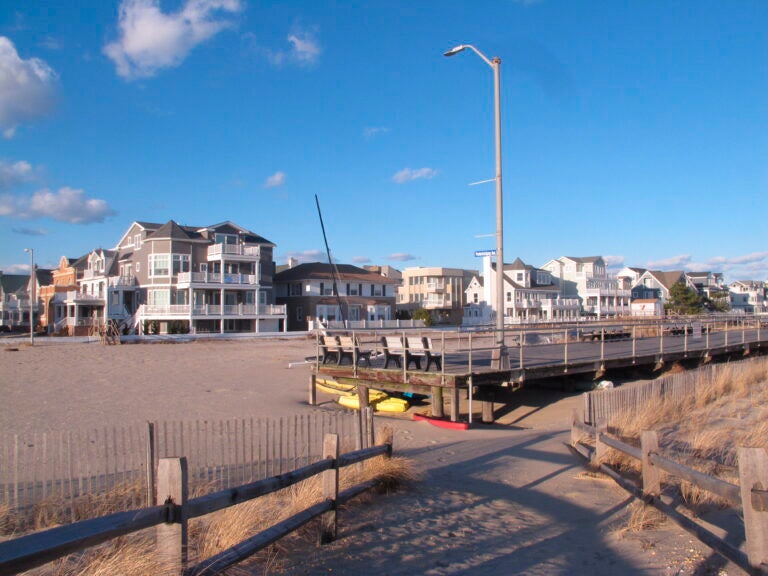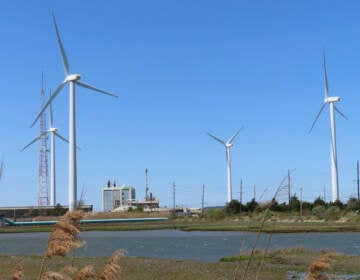Voters in Jersey Shore town of Margate reject a boardwalk
Voters in Margate, a well-to-do seaside community near Atlantic City, overwhelmingly rejected a proposal to build a boardwalk along its beachfront.

FILE - This Jan. 16, 2020 file photo shows the end of the Ventnor, N.J. boardwalk as seen from Margate, N.J., where a group of residents want the city to build its own boardwalk. Voters rejected the proposal on Nov. 3. (AP Photo/Wayne Parry, File)
Not everyone at the Jersey Shore loves boardwalks.
Voters in Margate, a well-to-do seaside community near Atlantic City, overwhelmingly rejected a proposal to build a boardwalk along its beachfront.
In incomplete tallies released by the Atlantic County Clerk’s office, a non-binding referendum on whether Margate should study the feasibility of building a boardwalk was rejected this week by a ratio of more than 2-to-1.
A group calling itself the Margate Boardwalk Committee proposed a 1.5-mile boardwalk connecting Margate with Ventnor to the north and Longport to the south. The $24 million project would have cost the average taxpayer between $110 and $190 a year in additional taxes, according to the group.
The median home price in Margate is nearly a half-million dollars, but those near the beach go for considerably more.
Some city officials, however, fear the actual cost of the boardwalk could be twice the group’s estimate.
“That is just as I thought it would go,” Mayor Michael Becker said. “It doesn’t surprise me. It was my position all along that we couldn’t afford it. They said it would cost $24 million, but personally I don’t see how we could have done it for less than $40 million.”
Glenn Klotz, one of the boardwalk committee’s leaders, did not immediately respond to a message seeking comment Thursday. But he said last year the boardwalk plan had its roots at least in part in a beach replenishment and dune construction plan that many in Margate opposed.
Insisting its wooden bulkheads provided better protection without blocking ocean views, Margate launched a series of court battles against the U.S. Army Corps of Engineers’ project. It was part of a nearly unbroken wall of sand envisioned by then-Gov. Chris Christie to protect New Jersey’s 127-mile coastline after the devastation wrought by Sandy in 2012.
The town and many of its residents warned that large ponds of water would collect between the dunes and the bulkheads — and that’s precisely what happened almost as soon as the work was finished in 2017, forcing some residents to slog through waist-high water while clutching children and beach gear. Engineering solutions have since corrected those conditions.
A boardwalk would help to “heal the damage” inflicted by the beach work, the committee said.
In addition to concern over the cost, some opponents cited fears of crime, saying an unbroken walkway from Atlantic City to their shore resort town would make it easier for criminals to commit crimes in Margate and quickly return home. Those sentiments drew support, as well as scorn, from various parts of the community.
Margate had a boardwalk in the early 1900s; it was destroyed by a hurricane in 1944.
WHYY is your source for fact-based, in-depth journalism and information. As a nonprofit organization, we rely on financial support from readers like you. Please give today.





